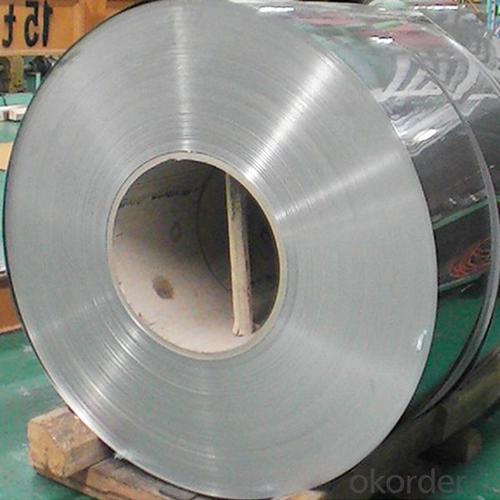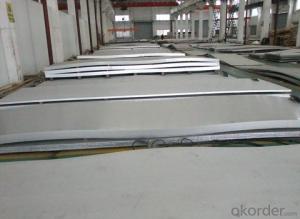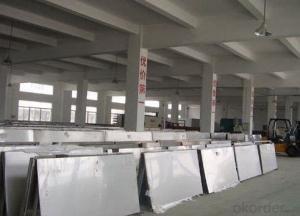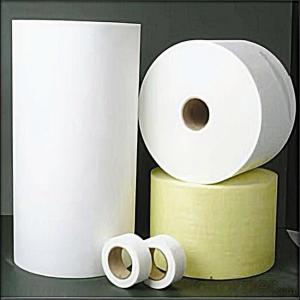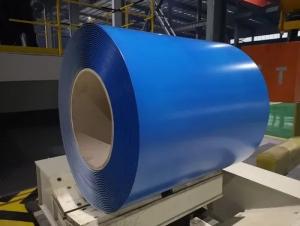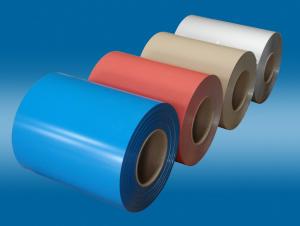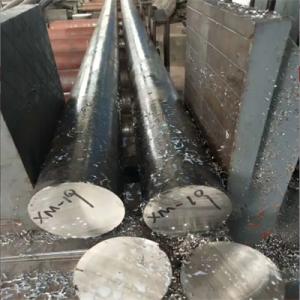Restaurant Stainless Steel Sheets Near Me - Hot Rolled Stainless Steel Plates Made in China
- Loading Port:
- Tianjin
- Payment Terms:
- TT OR LC
- Min Order Qty:
- 20 m.t.
- Supply Capability:
- 100000 m.t./month
OKorder Service Pledge
OKorder Financial Service
You Might Also Like
Specification
Products Description for Stainless Steel Coils/Sheets:
Product | stainless steel coils/plates/sheets | ||
Discharge Port | Any Port, China | ||
Size | Coils | Cold Rolled: | Thickness0.3-8mm,Width:280-2100mm |
Hot Rolled : | Thickness3-14mm,Width:650-2100mm | ||
Plates | Thickness2-80mm,Width:1500-3000mm | ||
Coil Weight | About 20 Tons | ||
Grade | 201,202,304/304L/304H,316/316L/316H,321/H,310S,409/L,430 etc. | ||
Technique | Hot Rolled/Cold Rolled | ||
Finish | 2B, BA, 2D, No1, No2, No4,NO.8,SB etc | ||
Edge | Mill Edge / Slitting Edge | ||
Package | In bundles, or as customer's requirement | ||
Place of Origin | Made in China | ||
MOQ | 20 Tons | ||
Specifications for Stainless Steel Coils/Sheets:
Type | 200 series,300 series,400 series |
Thickness | 1.8-8.0mm |
Widthness | 1000/1219/1500mm |
Technique | Hot Rolled/Cold Rolled |
Coil Weight | About 20 Tons |
Finish | NO.1/NO.2B |
Place of Origin | Made in China |
MOQ | 18 ton |
Color | Black,Mirror Finished |
Standard | ASTM, JIS, GB, BS, DIN etc |
Exporting countries | Peru,India,Pakistan,Singpore,Vietnam,South Korea,Malaysia etc. |
After-sales service | Factory Inspection |
Certifications | ISO,SGS |
Packaging | Standard export packing or following customer's demand |
Packaging & Delivery for Stainless Steel Coils/Sheets:
Packaging Detail | Standard export packing or following customer's demand |
Delivery Time | Within 30-40 days after deposit or according to the order quantity |
Detail picture for Stainless Steel Coils/Sheets
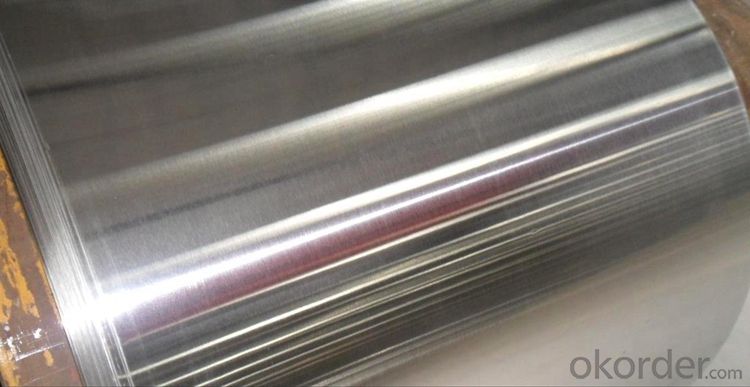
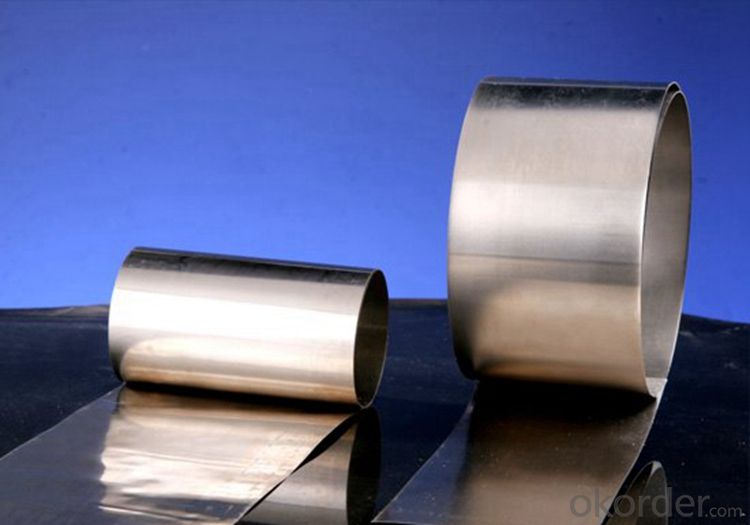
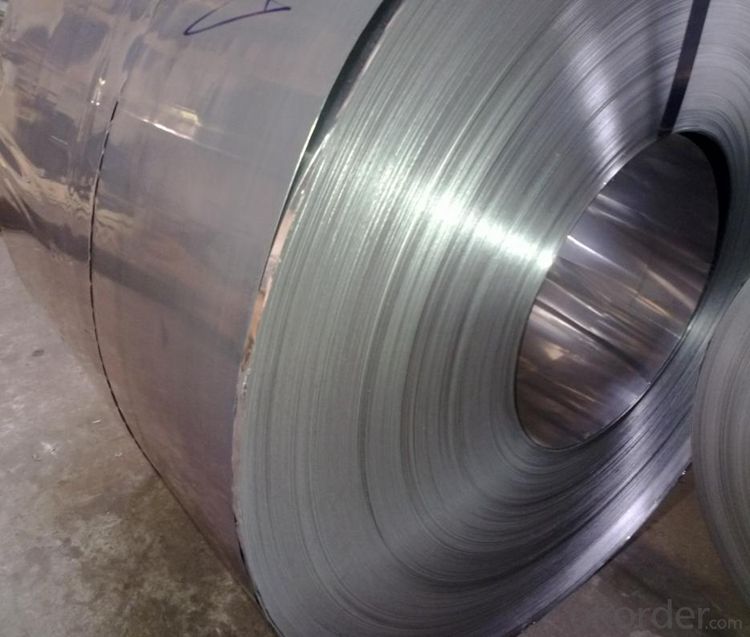
Export Markets for Stainless Steel Coils/Sheets:
Our target market is the international market. Every year we export most of products to countries like India, Pakistan, South Korea, Brazil, Australia, South Africa, Spain, Sri Lanka, Taiwan, Hong Kong, etc.
FAQ for Stainless Steel
Q: How long is the delivery time?
A: Normally 30-40 days, but mostly according to the specific requirements or the quantity
Q: Could you send me sample?
A: We can supply you with the sample for free, but the delivery charges will be covered by customers.
- Q:What is the difference between stainless steel sheets and plates?
- The main difference between stainless steel sheets and plates lies in their thickness. Stainless steel sheets are typically thinner and have a uniform thickness throughout, whereas stainless steel plates are thicker and have varying thicknesses depending on the specific application. Plates are commonly used for structural or heavy-duty purposes, while sheets are more commonly used for decorative or lightweight applications.
- Q:What is the width range available for stainless steel sheets?
- The width range available for stainless steel sheets can vary depending on the supplier, but it typically ranges from 36 inches to 72 inches.
- Q:What are the different types of edge profiles for stainless steel sheets?
- Some different types of edge profiles for stainless steel sheets include square edge, round edge, beveled edge, and chamfered edge.
- Q:Can stainless steel sheets be used for solar panels?
- Solar panels can indeed utilize stainless steel sheets. This material possesses a strong and reliable nature that withstands corrosion, thus making it suitable for long-term and outdoor usage. It offers exceptional defense against environmental elements like moisture and UV radiation, which are commonly encountered in solar panel installations. Furthermore, stainless steel showcases commendable thermal conductivity, promoting efficient dissipation of heat from the solar cells. This characteristic aids in maximizing the energy conversion efficiency of the panels. Additionally, stainless steel sheets present a sleek and polished surface, enhancing the visual appeal of the solar panels. All in all, stainless steel sheets are a reasonable and widely chosen option for the production of solar panels due to their durability, resistance to corrosion, thermal conductivity, and aesthetic attractiveness.
- Q:Are stainless steel sheets suitable for nuclear power plants?
- Stainless steel sheets are well-suited for nuclear power plants due to their unique properties that make them ideal for such hazardous environments. Firstly, their exceptional corrosion resistance is crucial in plants with high levels of corrosive substances. Corrosion can compromise materials' structural integrity, leading to safety risks and potential failures. Therefore, stainless steel's resistance to corrosion ensures the longevity and reliability of equipment and structures in nuclear power plants. Secondly, stainless steel possesses high strength and toughness, enabling it to withstand extreme conditions like high temperatures and pressures found in these facilities. This strength and toughness allow stainless steel to endure the harsh environment and potential mechanical stresses that may arise during normal operations or accidents. Moreover, stainless steel exhibits excellent heat resistance, a critical characteristic in nuclear power plants where nuclear fission generates high temperatures. Stainless steel's ability to maintain its strength and structural integrity even at elevated temperatures makes it suitable for containing and handling radioactive materials and hot fluids. Additionally, stainless steel is easy to clean and maintain, which is vital in nuclear power plants where cleanliness and sterility are paramount. Regular cleaning and maintenance are necessary to prevent the accumulation of radioactive contaminants and ensure the safe and efficient operation of equipment and systems. In conclusion, stainless steel sheets are highly suitable for use in nuclear power plants due to their corrosion resistance, strength, toughness, heat resistance, and ease of maintenance. Their utilization ensures the safety, reliability, and durability of equipment and structures, thereby enhancing the overall efficiency and effectiveness of nuclear power plants.
- Q:What is the coefficient of expansion of stainless steel sheets?
- The coefficient of expansion of stainless steel sheets typically ranges from 10.5 to 17.3 x 10^-6 per degree Celsius.
- Q:How do you determine the grade of a stainless steel sheet?
- Multiple factors must be taken into account in order to determine the grade of a stainless steel sheet. Firstly, it is necessary to analyze the composition of the stainless steel. Stainless steel is typically composed of a combination of metals, including iron, chromium, nickel, and other elements. The specific percentages of these metals will dictate the grade of the stainless steel. For example, a stainless steel sheet with higher levels of chromium and nickel will generally have a higher grade. The mechanical properties of the stainless steel are also an important consideration. These properties encompass the tensile strength, yield strength, and elongation of the material. Different grades of stainless steel will exhibit varying mechanical properties, which can be assessed using standardized testing methods. Surface finish is another factor that contributes to determining the grade of a stainless steel sheet. The finish can range from rough and dull to smooth and polished. Specific surface finishes may be associated with different grades of stainless steel, and this can be confirmed through visual inspection or the use of specialized equipment. Furthermore, the corrosion resistance of the stainless steel sheet plays a significant role in its grade determination. Stainless steel is renowned for its resistance to corrosion, and higher grades of stainless steel generally offer superior resistance to various corrosive environments. Corrosion testing methods, such as salt spray testing, can aid in evaluating the corrosion resistance of a stainless steel sheet. In conclusion, the grade of a stainless steel sheet can be determined by analyzing its composition, mechanical properties, surface finish, and corrosion resistance. By considering these factors, one can accurately ascertain the grade of a stainless steel sheet and assess its suitability for specific applications.
- Q:What are the common applications for stainless steel sheets?
- Due to their exceptional properties and durability, stainless steel sheets find a wide range of applications. They are utilized in various industries for different purposes. Some of the common uses include: 1. Architectural purposes: Stainless steel sheets are commonly employed in architectural projects like cladding, roofing, and wall panels. They not only provide a sleek and modern appearance to buildings but also offer corrosion resistance and easy maintenance. 2. Kitchenware manufacturing: Stainless steel sheets are widely used in the production of kitchen appliances, sinks, countertops, and cookware. Their resistance to stains, heat, and corrosion makes them ideal for use in kitchens. 3. Automotive industry: Stainless steel sheets are extensively utilized in the automotive sector for manufacturing exhaust systems, body parts, and trim. They provide strength, corrosion resistance, and an attractive finish, making them suitable for both functional and aesthetic purposes. 4. Medical equipment production: Stainless steel sheets are commonly employed in the manufacturing of medical equipment and instruments. This is due to their hygienic properties, resistance to corrosion, and staining. They are used in surgical instruments, dental tools, hospital equipment, and implants. 5. Chemical and petrochemical industries: The chemical and petrochemical industries extensively use stainless steel sheets due to their resistance to high temperatures, chemicals, and corrosion. They are employed in storage tanks, pipelines, heat exchangers, and other equipment that comes into contact with corrosive substances. 6. Food processing industry: Stainless steel sheets are highly sought after in the food processing industry because of their hygienic properties and resistance to corrosion. They are used to create food preparation surfaces, storage containers, and machinery that must meet strict sanitary standards. 7. Construction projects: Stainless steel sheets are used in construction projects such as bridges, tunnels, and railway tracks due to their strength, durability, and resistance to corrosion. They are also utilized in the construction of industrial buildings, warehouses, and infrastructure. 8. Aerospace industry: Stainless steel sheets find applications in the aerospace industry for various components, including aircraft frames, engine parts, and interior fittings. They offer an excellent strength-to-weight ratio, corrosion resistance, and heat resistance, making them suitable for demanding aerospace applications. In conclusion, stainless steel sheets are a versatile and widely used material in various industries due to their exceptional properties. They are indispensable for many applications.
- Q:Are stainless steel sheets resistant to acetic acid?
- Generally, stainless steel sheets exhibit resistance to acetic acid. Acetic acid, being a weak acid, does not bring about substantial corrosion or harm to stainless steel. Nevertheless, extended exposure to highly concentrated or boiling acetic acid might induce certain corrosion or discoloration on the surface of the stainless steel. It is crucial to acknowledge that the resistance of stainless steel to acetic acid can fluctuate based on the precise grade and composition of the stainless steel.
- Q:How do you prevent fingerprints or smudges on stainless steel sheets?
- There are several effective measures you can take to prevent fingerprints or smudges on stainless steel sheets: 1. Regularly wipe down the stainless steel surface with a soft microfiber cloth. Microfiber is great at attracting and trapping dirt, dust, and oils without leaving streaks or smudges. 2. Use warm soapy water to gently clean the stainless steel surface. Mix a small amount of mild dish soap with warm water, then rinse thoroughly and dry with a clean towel. This method effectively removes grease, fingerprints, and smudges. 3. Consider investing in stainless steel cleaners that are specifically formulated to remove fingerprints and smudges. Follow the instructions on the product for best results. 4. Apply a stainless steel protective coating or sealant to create a thin, invisible barrier that repels fingerprints and smudges. Follow the manufacturer's instructions for application and reapply as needed. 5. Avoid using abrasive cleaners, scrub brushes, steel wool, or harsh chemicals that can damage the protective layer of stainless steel. Stick to non-abrasive cleaning methods and tools to maintain the integrity of the surface. 6. Handle stainless steel sheets with care by using clean hands or wearing gloves to prevent the transfer of oils or dirt. Avoid dragging objects across the surface, as this can cause scratches and make it more susceptible to smudging. By incorporating these measures into your cleaning routine and handling practices, you can effectively minimize fingerprints and smudges on your stainless steel sheets, keeping them clean and pristine.
1. Manufacturer Overview |
|
|---|---|
| Location | |
| Year Established | |
| Annual Output Value | |
| Main Markets | |
| Company Certifications | |
2. Manufacturer Certificates |
|
|---|---|
| a) Certification Name | |
| Range | |
| Reference | |
| Validity Period | |
3. Manufacturer Capability |
|
|---|---|
| a)Trade Capacity | |
| Nearest Port | |
| Export Percentage | |
| No.of Employees in Trade Department | |
| Language Spoken: | |
| b)Factory Information | |
| Factory Size: | |
| No. of Production Lines | |
| Contract Manufacturing | |
| Product Price Range | |
Send your message to us
Restaurant Stainless Steel Sheets Near Me - Hot Rolled Stainless Steel Plates Made in China
- Loading Port:
- Tianjin
- Payment Terms:
- TT OR LC
- Min Order Qty:
- 20 m.t.
- Supply Capability:
- 100000 m.t./month
OKorder Service Pledge
OKorder Financial Service
Similar products
New products
Hot products
Hot Searches
Related keywords






